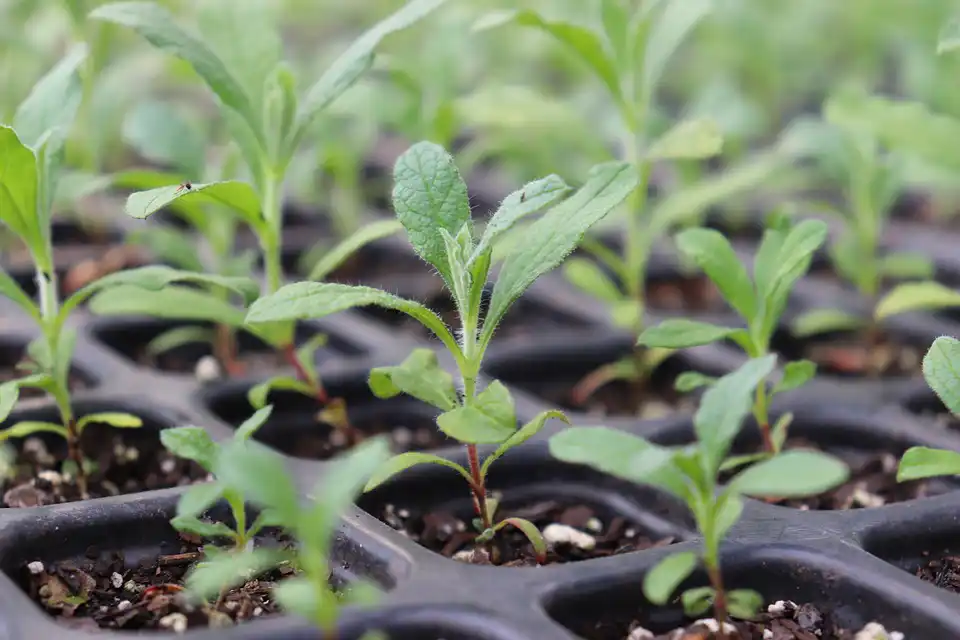There are many benefits to starting your seeds indoors, however my favorite reason to is because then I can garden all year.
In this post we’ll talk about the benefits of starting seeds early, when to start seeds indoors in Phoenix, the best vegetables to start indoors, and how to set up your germination station.
This post may contain affiliate links. Please read our disclosure policies. If you purchase after clicking an affiliate link, we may receive small commission at no cost to you. As an Amazon Associate, I earn from qualifying purchases.
Benefits of Starting Seeds Indoor
One of the benefits are starting seeds indoors is that you can save money. If you normally buy seedlings at your local nursery, growing your own seedlings is much cheaper.
Starting seeds indoors can lengthen your growing season for crops and you can harvest the fruits of your labor sooner.
Another benefit is be able to garden when it is still too hot outside. You can control the environment and it is fun to watch the seeds sprout. Young plants are not susceptible to pests.

When to Start Seeds Indoors
Start planting your seeds indoors 6-8 weeks before you would normally plant outside. If you live in the low desert areas of Arizona and you’re growing warm-season vegetables such as tomatoes, peppers, or cucumbers start seeds indoors the last couple of weeks in December and early January.
If you’re growing cool-season vegetables such as broccoli, peas, and cauliflower start seeds indoors the end of June and the month of July.
The Best Vegetables to Start Indoors
Tomatoes and peppers are two of the best plants to start indoors. Their growing season is short in Arizona, so starting these sooner gives them a better chance of producing before it gets too hot.
If you want to give your plants a head start starting seedlings indoors is the way to go.
Affiliate disclosure: This post uses affiliate links. If you purchase after clicking an affiliate link we may receive small commission at no cost to you. As an Amazon Associate I earn from qualifying purchases. All of our opinions remain our own. You can read our affiliate disclosure in our privacy policy.
Setting up you Germination Station: Lighting
Grow light, no grow light – how does your garden grow?
Can my plants sprout with no grow light?
You can grow seedlings indoors without a grow light. You will need a sunny location such as a south or north facing window for the seeds to germinate. Fluorescent lights can also help supplement natural sunlight.
I had an indoor plant at work and they only light it received was from fluorescent bulbs. We found the seed starter kits with a lid do well without a grow light if they have a sunny window in your house because it holds the moisture in.
Heat-loving or warm season vegetables require more sun or more light to grow. Cool season vegetables can grow with less sunlight. Nearly all plants prefer morning sun and afternoon shade.
Types of Starter Packs
A less expensive and more versatile option is to use seed starter packs without a lid. We have had success with these as well as long as they have access to sun and are watered frequently. These packs can be made from plastic or peat.
Burpee Self-Watering Seed Starter Tray
My favorite containers to start seedlings in are clear pots. This way you can see the roots.
Grow Lights for Indoor Seed Starting
If a sunny window is not available or space is limited near a window you will want to use a grow light to help your seeds sprout and grow. Vegetables need full spectrum lights to grow. This type of light closely resembles the sun. It mimics natural sun light and doesn’t produce as much heat as other lights.
Full Spectrum LED
Full spectrum LED light appears to be white. These type of lights are a great choice for all three stages of growth: sprouts to seedling, vegetative, and flowering stage.
Blue and Red Zone Lights
Blue zone lights promote plant development. This type of light helps the vegetative or the leaves and stems of your plant grow. Red zone lights are needed to promote flowering and to bring plants to fruition. We have a set-up in our garage and have used grow light strips with a timer.
So, the best grow lights for vegetables are full-spectrum lights in both the blue and red zone. Plants need both types to grow and bear fruit.
If you’re just looking for some grow lights for indoor succulents or cacti smaller grow lights are available.
Setting up Germination Station: Growing System Options
There are several indoor gardening systems to choose from. Some popular choices are using soil, peat, hydroponic, aeroponic, and aquaponic.
Which System is Best?
The answer to this question is going to depend on who you ask. There are negatives and positives to each type of gardening systems. Some questions to consider which is the best system for you include
- How many plants would you like to start indoors?
- How much are you willing to spend? If you are working on a limited budget you can purchase some inexpensive grow lights at Harbor Freight, Amazon or your local home improvement stores. You can also purchase grow lightbulbs that fit into your existing lamps.
- How much space do you have?
- Do you plan to grow seedlings indoors every year? If so, you may want to invest in a higher quality materials such as








